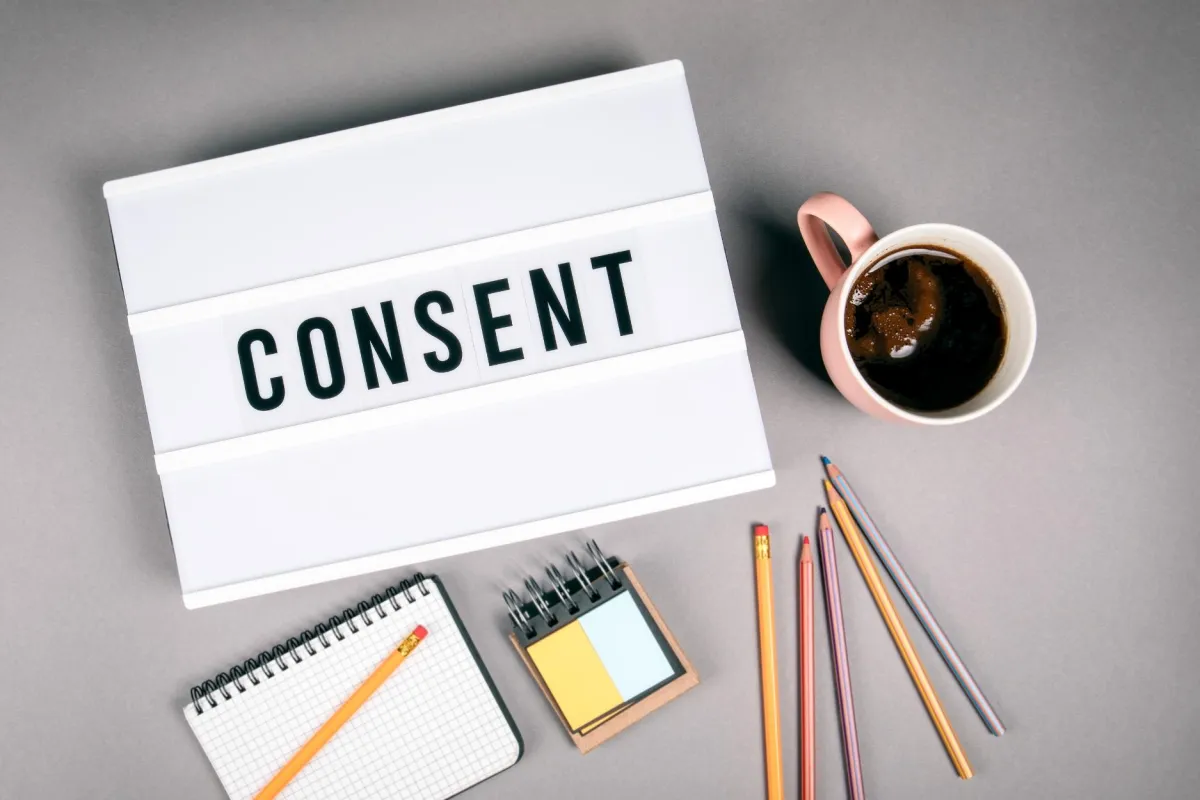
Navigating GDPR: A Guide to Obtaining Valid Consent
Introduction
Consent is a cornerstone of GDPR compliance, giving individuals control over how their personal data is collected and used. However, obtaining valid consent isn’t as simple as just asking for permission; it involves a process to ensure that consent is both informed and freely given. In this blog, we’ll explore GDPR’s consent rules, what makes consent valid, and the responsibilities organisations have for record-keeping.
What is Valid Consent Under GDPR?
Under GDPR, valid consent must be:
Freely Given: Consent should be given without any pressure or negative consequences for not consenting. It’s essential that individuals can refuse or withdraw their consent easily.
Specific and Informed: The purpose for which consent is sought must be clearly outlined. Individuals must understand what they are agreeing to, and vague or overly broad statements don’t meet GDPR requirements.
Unambiguous and Affirmative: Consent requires a clear affirmative action from the individual. Silence or pre-ticked boxes are not acceptable. Individuals must take a clear action to indicate their consent, such as clicking an opt-in box.
Steps to Obtain Valid Consent
Here’s a straightforward guide to ensuring that your process for obtaining consent meets GDPR standards:
1. Use Clear and Plain Language
When asking for consent, keep the language straightforward. Avoid legal jargon or complicated terms, so individuals understand what they are consenting to. This is especially important when seeking consent for multiple data uses—each purpose should be explained in a way that anyone can easily comprehend.
2. Separate Consent Requests
Avoid bundling consent for different purposes together. For example, if you want to send a newsletter and collect data for customer profiling, these should be two separate consent requests. This allows individuals to choose specific options without feeling pressured to consent to everything at once.
3. Provide an Opt-Out Option
GDPR requires that individuals have the option to withdraw consent at any time. Make it simple for them to do so, by providing an opt-out link in emails or a straightforward option within account settings. Not only does this comply with GDPR, but it also builds trust with your audience by showing respect for their choices.
4. Document and Record Consent
Record-keeping is a critical aspect of GDPR compliance. Organisations are responsible for demonstrating that valid consent was obtained. Record the following details:
Who consented (name, email, etc.)
When they consented (date and time)
What they were told at the time of consent
How they consented (e.g., ticking a box on a form)
Having these records ready helps verify compliance in the event of an audit.
What Doesn’t Count as Valid Consent?
GDPR specifically prohibits certain methods of obtaining consent that were once common, such as:
Pre-Ticked Boxes: A pre-ticked box doesn’t count as valid consent because it’s not an active choice by the individual.
Silence or Inactivity: GDPR requires a clear action. Simply assuming consent based on someone’s lack of response does not meet the standard.
Bundled Consent: Requiring someone to agree to unrelated data processing as a condition for service is not allowed. Each request must stand alone, giving the individual a real choice.
Keeping Consent Updated
Under GDPR, consent isn’t a one-time event. If you’re processing data over an extended period, it’s advisable to check back with individuals periodically to confirm their consent. This is particularly important if you make changes to the way you process data. Always inform users of updates and seek fresh consent if the original terms change.
Practical Tips for Organisations
Provide Clear Explanations: Ensure that users know exactly what they’re consenting to. Use examples to illustrate the type of data you’ll collect and why.
Create a Withdrawal Process: Make it easy for users to withdraw consent. A simple ‘unsubscribe’ button or clear instructions in your privacy policy can help.
Audit Consent Regularly: Conduct regular reviews of your consent-gathering process and records. This keeps your consent process compliant with evolving regulations and business needs.
Conclusion
Obtaining valid consent under GDPR is essential for building a compliant data protection strategy. By following the principles of clarity, specificity, and transparency, you can ensure that your consent process respects individual rights while protecting your organisation from potential penalties. Remember, GDPR compliance isn’t just about meeting legal standards—it’s about fostering trust with your audience by giving them control over their data.